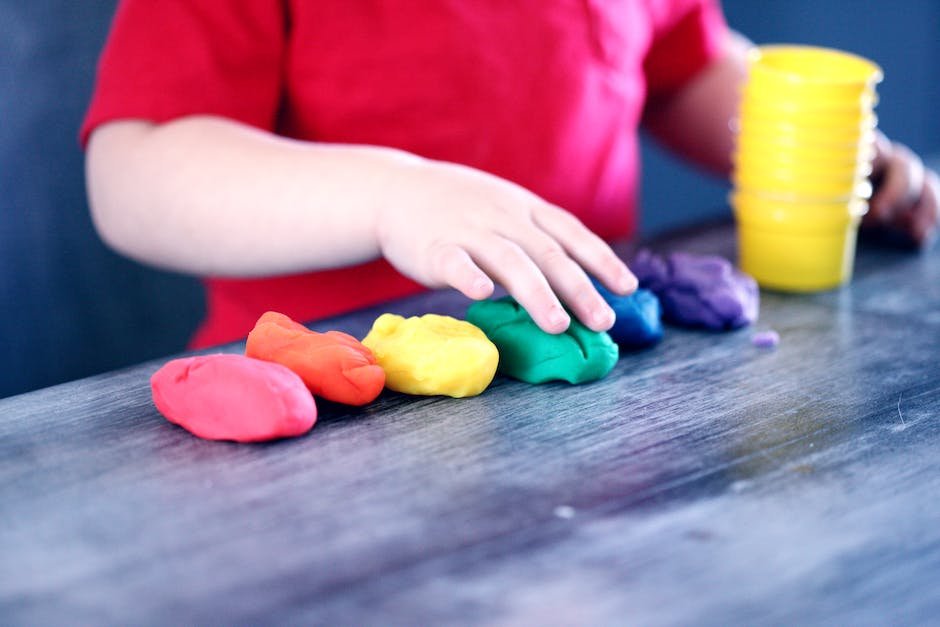
One aspect often observed in individuals diagnosed with Autism Spectrum Disorder (ASD) is self-stimulatory behavior, also widely known as ‘stimming’. In the realm of autism, stimming characterizes a broad range of repetitive behaviors that engage the senses in unique ways. From hand-flapping and rocking to fixating on specific objects, these actions have different manifestations and serve a myriad of purposes for those on the autism spectrum. This discourse seeks to illuminate the nature, reasons, and implications of this behavior, and will provide a lens into the management approaches beneficial for those endeavoring to support children with autism. Most importantly, we delve into the impact of stimming on familial dynamics, creating an essential dialogue for families navigating the autism journey.
What is Self-Stimulatory Behavior in Autism?
Navigating Self-Stimulatory Behaviors in Children with Autism
Understanding your child’s unique behaviors and characteristics is essential in promoting their growth and development. This fact rings even more true when raising children with autism. One common behavior in the autism community is self-stimulatory behavior, also known as ‘stimming.’ Stimming can be both baffling and concerning for many parents. It’s time to explore this topic, aiming to demystify it and provide some comfort to parents out there.
Self-Stimulatory Behavior (Stimming): What Is It?
‘Stimming’ refers to behaviors performed repetitively because they give the individual comfort or sensory pleasure. Though everyone ‘stims’ to some degree (like twirling hair or tapping your foot), it’s much more pronounced and persistent in individuals with Autism Spectrum Disorder (ASD). Stimming can take on many forms involving any or all the senses in various capacities.
Manifestations of Stimming in Children with Autism
These behaviors can be grouped into five categories: visual, auditory, tactile, vestibular (pertaining to balance), and proprioceptive (pertaining to body awareness).
- Visual Stimming: Children might stare at lights, blink repeatedly, or watch objects spin. This stimming form is associated with the pleasure derived from visual stimuli.
- Auditory Stimming: This stimming category includes behaviors like snapping fingers, tapping ears, making sounds, or repeating phrases/words.
- Tactile Stimming: This form of stimming entails self-soothing by touching textures, rubbing or scratching surfaces, or even feeling certain materials.
- Vestibular Stimming: This category involves motions such as rocking, spinning, or repeating any movement that stimulates the sense of balance.
- Proprioceptive Stimming: This involves deep pressure or joint compressions, such as headbanging or wall punching. These movements can offer a calming effect on the child’s sensory system.
It’s important to note that stimming in itself isn’t bad or ‘incorrect’ behavior. It’s a coping mechanism for children with autism that offers a way to self-soothe, focus, or express their emotions.
Understanding Your Child’s Stimming
Although stimming is common in children with autism, it’s most often a harmless behavior. However, when self-stimulatory behaviors get in the way of learning, socializing, or could cause harm, it may need intervention. This could include redirecting the child towards safer stimming behaviors or employing therapies that teach alternative coping strategies.
At the end of the day, understanding our children’s unique needs and behaviors is another facet of the deep bond we share with them. Yes, parenting may feel overwhelming at times, particularly when dealing with unknowns like stimming. But with patience, understanding, and some guidance, parents can navigate these complexities successfully.
Remember, each child’s journey with autism is unique, just like every child is unique. Your child’s stimming habits are a part of them, as much as their laughter or their love for pancakes on Sunday mornings!
So, the next time you notice your child stimming, take a deep breath. You’re on this journey together, and understanding is the first step to helping. Breathe, observe, and learn – with love at the core of it all, the challenges somehow seem less daunting.
Here’s to you, wonderful parents – navigating this journey one step at a time, blazing the trail for your child’s brightest future.

Reasons behind Self-Stimulatory Behaviors
Crackling the enigma of self-stimulatory behaviors in children with autism, there’s one truth we can’t ignore; it’s a part of who they are. When you stay attuned with their rhythm, you can help them navigate through it with grace.
Primarily, why does stimming occur? Several experts believe that self-stimulatory behaviors assist in managing overwhelming sensory input. Imagine being at a loud concert with blaring lights that you can’t leave. That’s akin to how sensory overload might feel for someone with autism. In such situations, stimming can function as a buffer by diverting attention from excessive sensory stimuli, thereby helping to regain equilibrium.
In addition, stimming can also be a response to under-stimulation. Picture a dull, monotonous classroom lecture that fails to engage your interest. To someone with autism, certain environments may not provide enough sensory stimulation, and thus, stimming becomes a way to self-stimulate and keep mentally active.
Ever witnessed your child stimming when they were joyful or excited? That’s because stimming can often be an expression of emotions. Just like we might jump with joy, clench our fists in anger, or wring our hands when nervous, children with autism might respond through various forms of stimming. The key lies in observing and understanding these stimming behaviors as a language of its own.
To help manage stimming, redirecting can be a beneficial strategy, especially for behaviors that might cause self-injury or impede their daily functioning. The focus should never be on stopping stimming entirely but finding safer, less disruptive alternatives. For example, if a child tends to rock violently, offering a rocking chair can serve as a gentler alternative. If they enjoy spinning objects, a fidget spinner might be an ideal replacement.
Education plays a vital role, too. While there’s a long road ahead to widespread understanding and acceptance, take small steps in your social circles. Encourage discussions around autism and stimming, and promote acceptance. It might even be worth inviting family and friends to autism-related seminars, so they too can better understand your child’s unique behaviors.
Lastly, remember that every child is unique, and so is their experience with autism and stimming. As parents, it’s important to equip ourselves with as much knowledge as possible, whilst never losing sight of our child’s individual needs. Providing a safe, accepting, and understanding environment can truly make a world of difference when it comes to living life with autism and stimming.
In this way, we keep celebrating their uniqueness, cherishing their journey, and most importantly, making them feel seen, heard, and understood. After all, every hum, twirl, or flicker of a finger tells a story – a story of their world, perceptions, and experiences – a story that truly matters.
Parenthood is a dance, and caring for a child with autism might be an intricate ballet. Yet, with love and understanding, we learn the steps. Together.

Managing and Responding to Self-Stimulatory Behaviors
Creating an Environment of Support and Understanding
All children desire a sense of belonging and acceptance, and those with Autism Spectrum Disorder (ASD) are no different. When these children exhibit self-stimulatory behaviors, or “stimming”, it is vital for parents and caregivers to respond appropriately instead of viewing these actions as negative. Here are strategies for managing and redirecting stimming behaviors with patience and understanding.
-
Establish a Comfortable, Therapeutic Space
As parents and caregivers, it’s crucial to create an environment in which each child feels safe, comfortable, and capable of expressing themselves. This therapeutic environment aids in managing and sometimes decreasing the need for stimming. A room filled with cushions, soft lighting, and relaxing noises can provide a sensory-controlled space that supports the child in feeling calm and relaxed.
-
Devising Diverse Sensory Activities
Children with autism often stim to regulate their sensory input or output. Hence, having a variety of sensory activities at one’s disposal can be beneficial. These can range from simple tasks like sorting pasta by shape or color, engaging in messy play with substances like slime or playdough, or using high-energy activities like trampoline jumps or swings. By creating a sensory-rich environment, you can provide alternatives to stimming while still catering to their sensory needs.
-
Communication and Patience
Understanding and accepting stimming is one way of affirming that your child’s experience is valid and acknowledged. Communication works wonders in knowing their triggers and comforts. Introducing visual aids or communication apps can also encourage them to express feelings and reduce reliance on stimming as their only communication tool.
-
Employ Gentle Redirection
Redirecting should only be done when the stimming behavior poses potential harm or disrupts daily function. Instead of commandingly instructing them to stop, introduce alternative activities they can engage in. In doing so, the replacement you provide can help channel their energy into a positive and enriching practice.
-
Seek Expert Advice
Seeking out support from occupational therapists or autism experts can be a boon for parents trying to navigate this journey. Their guidance and suggestions based on individual cases can lead to tailored activities and strategies that can go a long way in managing stimming behavior.
-
Emphasis on Education and Acceptance
Promoting acceptance among peers and society is as vital as managing stimming at home. Encouraging the school community and friends to understand and accept these behaviors are crucial steps toward creating an inclusive environment for your child.
Just as every child is unique, so does their journey with autism and stimming. As caregivers, it’s crucial to remember that the path of parenthood, when caring for children with autism, is much like a dance. It requires love, patience, understanding, and grace. It’s not about leading or directing, but rather about tuning into the child’s rhythm and moving in concert with them.
Navigating through stimming does require effort, patience, and plenty of understanding. Still, in hearteningly supportive circumstances, children with autism can flourish, assured that they are loved and accepted in their unique and vibrant individuality. It is these environments that plant the seeds of confidence needed for them to take strides in their own growth and development.

Impact of Self-Stimulatory Behavior on Family Life
Impacts of Self-Stimulatory Behavior on Family Dynamics
Raising a child is a journey filled with learning curves and the experiences are magnified when parenting a child with autism. The presence of self-stimulatory behavior, or stimming in autism, has an undeniable impact on family life and dynamics. Admittedly, it can be challenging, but ultimately it paves the path towards deepened familial bonds built on acceptance, understanding, and love.
Stimming represents a crucial aspect of the experience for a child with autism, with profound influences that ripple through the family unit. It demands from every family member a degree of adjustment, patience, and acceptance. But like other perceived obstacles in life, they too can transform into an opportunity for growth, strength, and unity.
A pressing concern for many families is the sibling dynamic, how the brother or sister interacts with a child who stims. It is essential to foster an atmosphere of honesty and acceptance from the beginning. Encourage siblings to communicate their feelings and ask questions to better understand their brother’s or sister’s behavior. With patience and understanding, siblings can become empathetic supporters and advocates for their sibling with autism.
In the wider family context, planning for family gatherings or casual get-togethers can admittedly be a bit tricky due to potential sensory overloads for the child. Family members must be educated about stimming, expressing the need for flexibility and understanding. With sensitized relatives who understand autism and stimming, get-togethers become more inclusive. Gatherings can then morph into beautiful occasions that underscore the power of love, acceptance, and understanding.
Self-stimulatory behavior also impacts the dynamics between parents or caregivers. With shared understanding and common goals, these challenges facilitate cooperation and teamwork. As parents jointly navigate the nuances of soothing a stimming child, their partnership often grows stronger. Patience and resilience become integral elements of their bond – a stark evidence of love conquering all.
As you welcome self-stimulatory behavior into your home, crafting a supportive environment is crucial. From establishing comfortable, therapeutic spaces to devising creative sensory activities, every alteration aids your child’s comfort. Implement gentle redirection rather than forced change, always keeping communication channels open with your child. Additionally, seeking expert advice can improve your ability to cope, comprehend, and act.
The journey of raising a child with autism is unique, filled with moments of learning, joy, triumph, and growth. As you nurture understanding and acceptance around self-stimulatory behavior, each stim becomes an intimate component of the familial bonds. Remember, every family dances to its own rhythm, and embracing this dance – with all its steps and turns – is what makes this journey genuinely unique. It’s a dance steered by love, refined by understanding, and shaped by acceptance.

To echo the complexity of autism itself, stimming presents both a palette of challenges and opportunities in understanding this condition better. It highlights the unique way in which those on the autism spectrum experience their surroundings. Whether serving a sensory need, providing an emotional outlet, or acting as a self-soothing mechanism, stimming shines a light on the diversity within the autism spectrum. Deftly managing these behaviors necessitates attention and a deep level of understanding, but the reward is an enriched connection with the child. Above all, acknowledging and adapting to these behaviors can bring about a harmonious family milieu, a nurtured sibling relationship, and a feeling of acceptance for the autistic child. Thus, key to ameliorating life for families impacted by ASD is to promote comprehension, patience, and empathy around stimming and its underlying causes.




